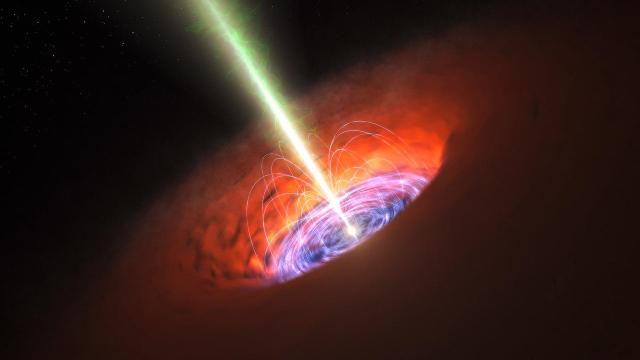Ask Ethan: Could Dark Matter And Dark Energy Be The Same Thing?
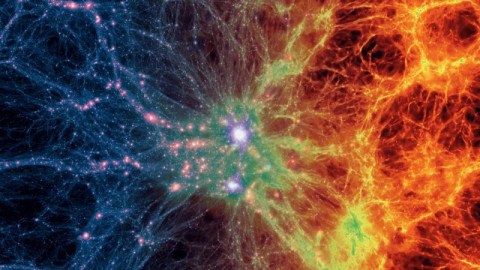
Are dark matter and dark energy both two sides of the same coin?
When it comes to the Universe, what you can easily see isn’t always reflective of all there is. It’s one of the important reasons why theories and observations/measurements need to go hand-in-hand: observations tell you what’s there to the best of our measurement capabilities, and theory allows us to compare what we’d expect to occur versus what’s actually seen. When they match up, that’s generally an indication that we have a pretty good understanding of what’s actually going on. But when they don’t, that’s a sign that one of two things is occurring: either the theoretical rules we’re applying aren’t quite right for this situation, or there are additional ingredients out there that our observations haven’t directly revealed. Many of the biggest mismatches in the Universe — between what we observe and what we would have expected based solely on what we see — point to two additional ingredients: dark matter and dark energy. But could they actually be two sides of the same coin? That’s what Dennis Daniel wants to know, asking:
“Are dark matter and dark energy separate from each other, or are they integrated? If separate, do they interact, and what keeps them apart? If integrated, how do we distinguish them?”
We generally don’t integrate them together, but that’s not entirely out of the realm of possibility. Here’s what a look into this issue reveals.
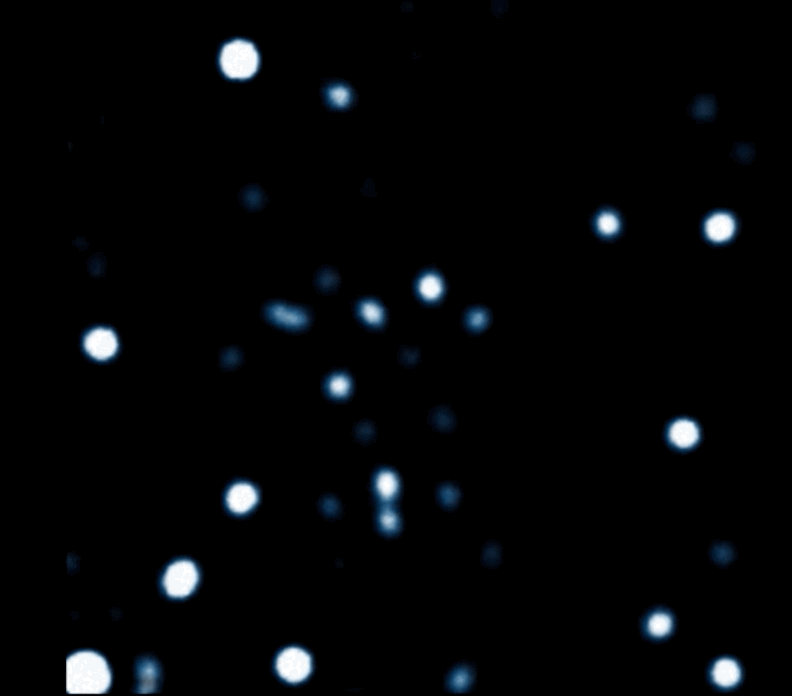
There are all sorts of puzzles out there to ponder in the Universe, but on the largest cosmic scales, every single one is gravitational in nature. The issue is this: we think we know what our theory of gravity is, as Einstein’s general relativity just keeps passing test after test after test. No matter what phenomenon we throw at it, what this counterintuitive theory predicts matches up exquisitely with what we observe.
We see mass bending light by the exact amount that Einstein’s theory predicts: from starlight bent by the Sun in our Solar System to enormous galaxies, quasars, and clusters of galaxies that gravitationally lens background light.
We see gravitational waves with the precise frequency and amplitude that Einstein’s theory predicts for merging black holes and inspiraling neutron stars.
The list of Einstein’s successes is long, from gravitational redshifts to the Lense-Thirring effect to the precession of black holes in binary orbits to gravitational time dilation and a whole lot more. Every test we’ve figured out to throw at general relativity, from experiments here on Earth to observations within our Solar System to the arrival of signals from billions of light-years away, all point toward it being correct under every known circumstance.
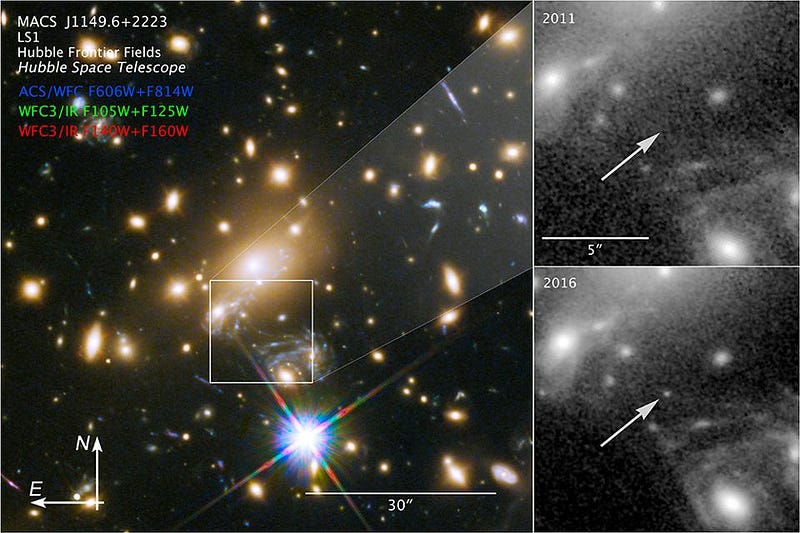
When we take our theory of gravity and apply it to the entire Universe, we get a set of equations that reveal a very important relationship. They tell us that if you know what your Universe is made up of, the theory of general relativity can predict for you how your Universe is going to behave and evolve. You can literally make your Universe out of anything you can dream up, including regular ingredients like normal matter, radiation, and neutrinos, which are made from particles found in the Standard Model, plus anything else like black holes, gravitational waves, or even hypothetical entities like dark matter and dark energy.
These different ingredients affect the Universe in different ways, and it’s pretty easy to understand why. All you have to do is imagine the Universe as it was long ago, when it was smaller, hotter, denser, and more uniform, and to picture how it will evolve over time. As time progresses, the Universe will expand, but different species of energy will behave differently from one another as this occurs.

Normal matter, for instance, will get more dilute as the Universe expands: the number of matter particles stays the same, but the volume which it occupies increases, so its density goes down. However, it will also gravitate, which means that the regions of space that have slightly greater-than-average densities will preferentially attract more of the surrounding matter to them than others, while the regions with a slightly below-average density will tend to give up their matter to the surrounding regions. Over time, the Universe not only gets more dilute, but starts to grow dense structures first on small scales, then on larger ones as time goes on.
Radiation, on the other hand, not only gets more dilute, but also loses energy as the Universe expands. This is because the number of photons, like the number of protons, neutrons, or electrons, is also fixed, so as the volume increases, the number density goes down. But the energy of each individual photon, as defined by its wavelength, will also decrease as the Universe expands; as the distance between any two points stretches, so does the wavelength of a photon traveling through the Universe, causing it to lose energy.
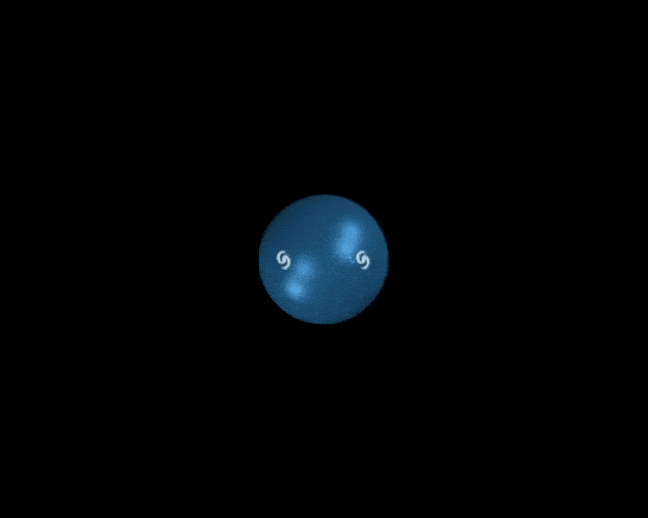
When we look at the galaxies in the Universe, groups and clusters of galaxies, and even the massive, enormous cosmic web that’s formed over billions of years, we can examine:
- their internal properties, like how fast the stars and gas and other components inside of them are moving as a function of distance from the center,
- their clustering properties, like how likely you are to find another galaxy at a certain distance from any given galaxy,
- how massive they are, as inferred from the gravitational effects they cause, such as lensing,
- and where (and how much) the normal matter that makes these objects up is located, including gas, dust, stars, plasma, and more.
When we do, we find that the matter we observe — all of the normal matter, radiation, and every other Standard Model particle that ought to exist in the Universe — simply isn’t enough to account for what we observe. On every account, from the rotational speeds of individual galaxies to the motions of individual galaxies within clusters to the large-scale clustering of galaxies in the Universe to the overall mass density of the Universe, there’s simply too much mass that needs to be there, by about a factor of 600%, to be explained with normal matter alone.
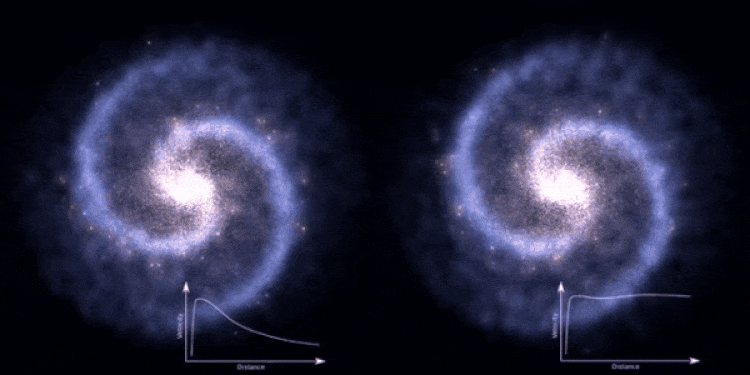
All of these observed phenomena are very, very real, as we have ubiquitous examples of this occurring in a myriad of objects, and extraordinarily few objects that don’t exhibit this mismatch between the normal matter that’s present and the effects of gravity. However, we’re in a little bit of luck, as there’s just one ingredient, if we add it to the Universe, that can bring all of this back in line: dark matter.
If, in addition to normal matter, you add this one additional ingredient that is:
- cold, in the sense that it was moving slow relative to the speed of light back when the Universe was very young,
- collisionless, in the sense that it doesn’t collide and exchange momentum with either normal matter, radiation, or other dark matter particles,
- dark, in the sense that it’s invisible and transparent to radiation and normal matter,
- and matter, in the sense that it’s massive and it gravitates,
all of these phenomena, and many others, suddenly line up with the predictions of Einstein’s gravity. There are many arguments from people in the minority “camp” of modifying gravity that explain a few of these phenomena — MOND, for MOdified Newtonian Dynamics, in particular, explains many of the phenomena that occur on small cosmic scales (a few million light-years or less) just as well or even better than dark matter does — but any modification that you make necessitates also including either dark matter or something that looks indistinguishably like dark matter. It makes dark matter an extremely compelling candidate for something novel that exists in our Universe.

There’s also another important piece of evidence that we haven’t talked about yet, however: the cosmic microwave background. If you start off simulating your Universe right at the earliest moments of the hot Big Bang and add in the ingredients we expect to be there, you’ll find that by the time the Universe has expanded and cooled enough so that we can form neutral atoms, there will be a pattern of temperature fluctuations that emerges in a scale-dependent way in the Big Bang’s leftover glow: the thermal bath of radiation that is redshifted to microwave wavelengths by the present day.
The radiation itself was first detected in the mid-1960s, but it’s a herculean task to measure the imperfections in that almost-uniform background, because the hottest areas of the sky are only about 0.01% warmer than the coldest areas. We didn’t truly begin to measure these primordial cosmic imperfections until the 1990s with the COBE satellite, whose results were then built upon by BOOMERanG, WMAP, and Planck (and others). Today, we’ve measured the temperature of the entire microwave sky in nine different wavelength bands, to ~microkelvin precision, down to angular scales as small as 0.05 degrees. The data that we have can only be described as exquisite.
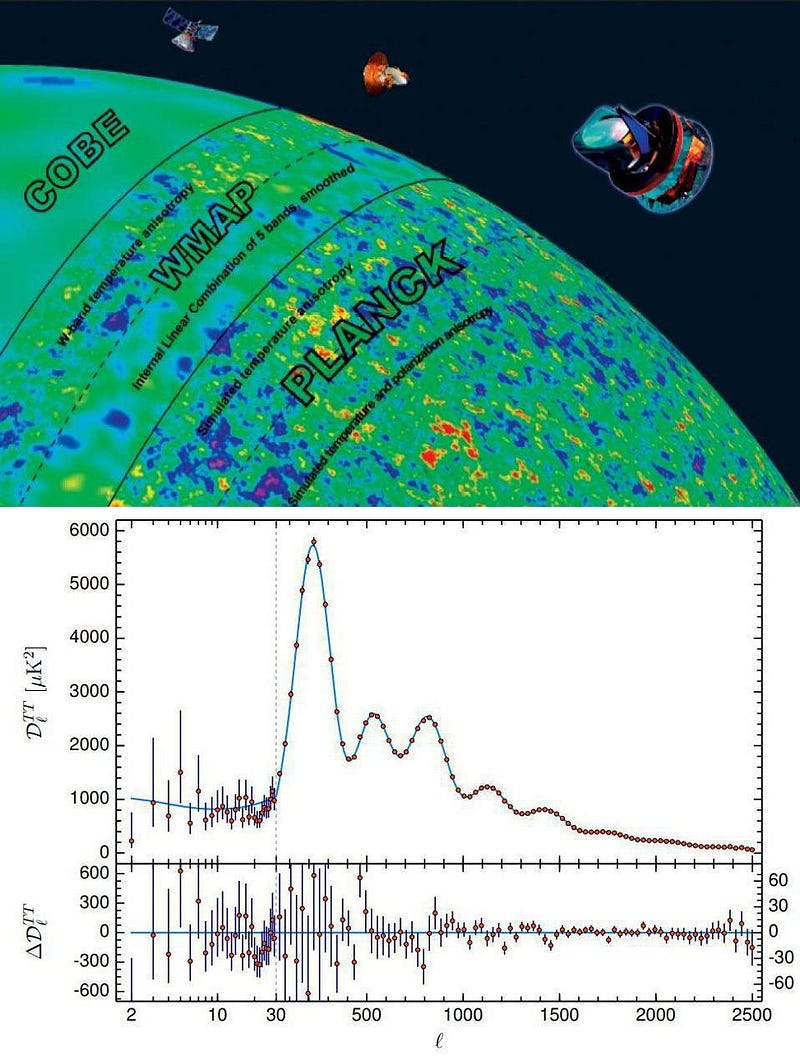
That pattern of fluctuations that you can see, on the graph above, is extremely sensitive to what’s in your Universe. The magnitude and locations of the various peaks and troughs tells us what’s in the Universe, and also rules out models of the Universe that don’t align with the data. For example, if you simulate a Universe with only normal matter and radiation, you’d only get about half of the peaks and valleys that we see, plus the peak would occur on too small of an angular scale, plus the temperature fluctuations would be much larger in magnitude. For this set of observations, dark matter is required.
But also, something else, in addition to dark matter, is required. If you take all of the normal matter, dark matter, radiation, neutrinos, etc., that we know are in the Universe, you’d find that this only makes up about a third of the total amount of energy that must be present to give us this data set that we receive from the Universe. There must be another, additional form of energy that’s present, and unlike dark matter or normal matter, it cannot clump or cluster together. Whatever this form of energy is — and it is required to get the cosmic microwave background to match our observations — it has to exist in addition to dark matter.
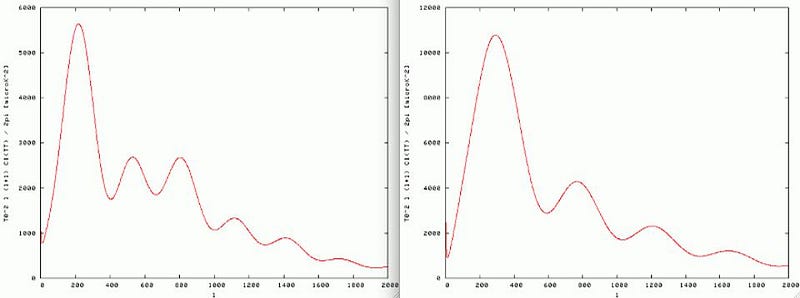
Dark matter and dark energy behave very differently from one another, but they’re both “dark” in the sense that they’re invisible to any known direct detection method. We can see their indirect effects — for dark matter, on the structure that forms in the Universe; for dark energy, on how the Universe expands and the radiation within it evolves — but they behave very differently from one another. The biggest differences are:
- dark matter clumps, while dark energy appears to be smoothly distributed throughout all of space,
- as the Universe expands, dark matter gets less dense, but the density of dark energy remains constant,
- and dark matter works to slow the expansion of the Universe, while dark energy actively works to cause distant galaxies to appear to accelerate as they recede from us.
You can always make a “unified model” of dark matter and dark energy, and many physicists have done so, but there’s absolutely no compelling motivation to do so. If you think there is, you’ll have to provide a compelling answer to the following question:
“Why is it more compelling to introduce one new, unified component that has two free parameters to it — one to explain the “dark matter” effects and another one to explain the “dark energy” effects — than it is to introduce two independent components that evolve independently of one another?”
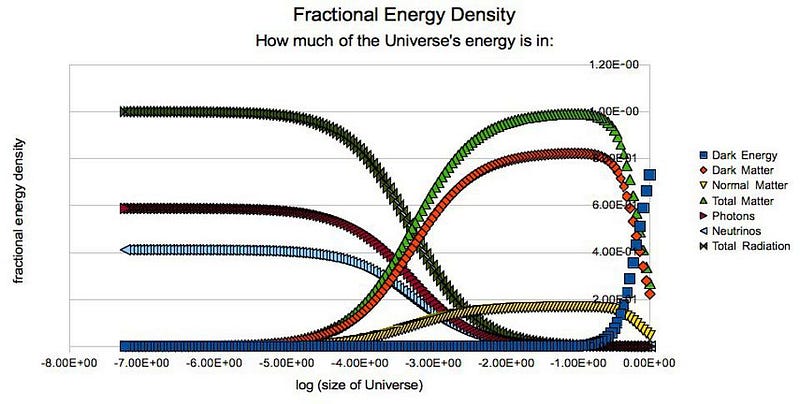
This question seems especially poignant when we look at how dark matter and dark energy evolve in terms of relative importance (in terms of what percent of the energy density they make up) as a function of time. From when the Universe was a few tens of thousands of years old until it was about ~7 billion years old, dark matter made up ~80% of the Universe’s energy density. Over the past ~6 billion years, dark energy has come to dominate the Universe’s expansion, now making up around ~70% of the total amount of energy in the Universe.
As time continues on, dark energy will get more and more important, while all the other forms of energy, including dark matter, will become negligible. If dark matter and dark energy are somehow related to one another, that relationship is subtle and not obvious to physicists given our current understanding of nature. For dark matter, you have to add an additional ingredient that gravitates into clumps, but doesn’t collide or exert a pressure. For dark energy, that ingredient doesn’t clump or collide, but does exert a pressure.
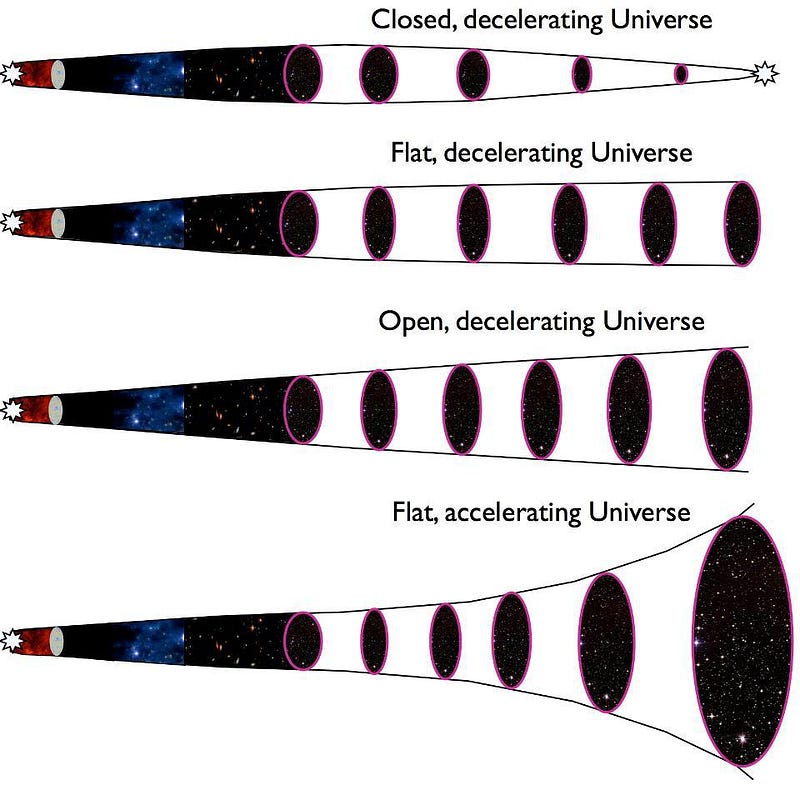
Are they related? We cannot say for certain. Until we have some evidence that these two things actually are related somehow, we have to take the conservative approach. Dark matter forms and holds together the largest bound structures, but dark energy pushes those individual structures away from one another. The latter is so successful that in 100 billion years or so, all that will be left of our visible Universe is the Local Group of galaxies. Beyond that, there will only be an empty expanse of nothingness, with no other galaxies visible for trillions upon trillions of light-years.
Send in your Ask Ethan questions to startswithabang at gmail dot com!
Starts With A Bang is written by Ethan Siegel, Ph.D., author of Beyond The Galaxy, and Treknology: The Science of Star Trek from Tricorders to Warp Drive.





